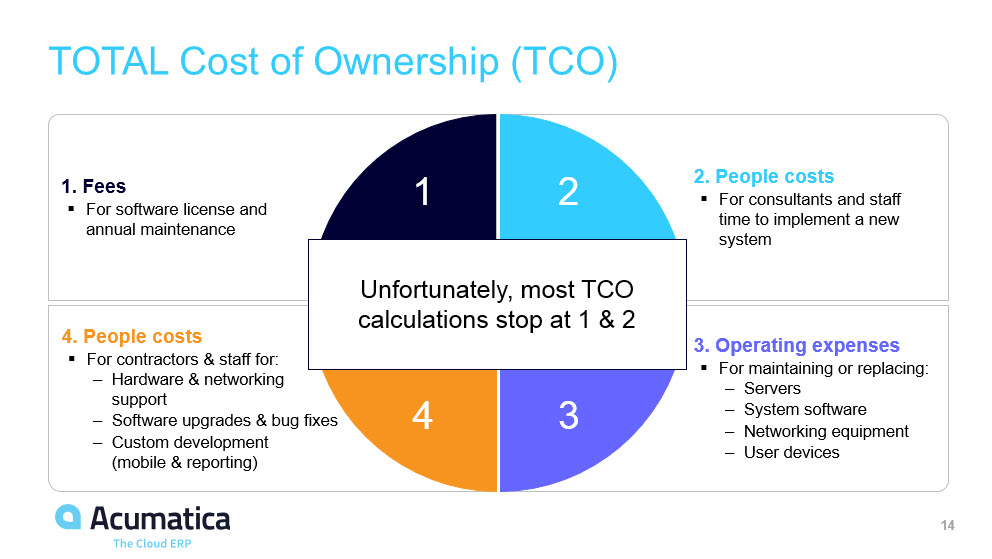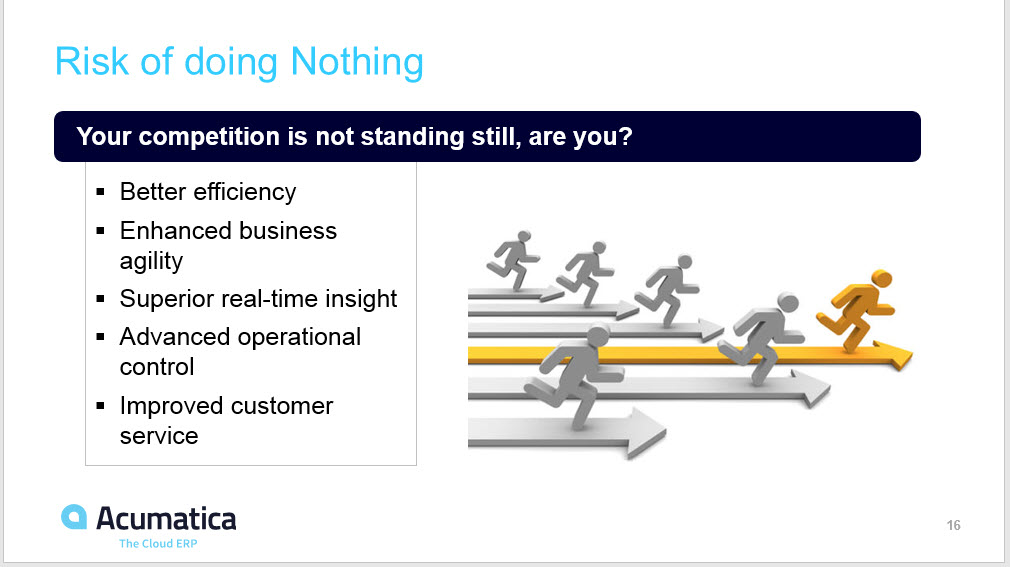ERP: Evaluating The Cost of Doing Nothing
The Cost of Doing Nothing
This is a post to help with the considerations around evaluating a modern cloud software. In particular, we’re interested in exploring Acumatica as a cloud ERP solution for businesses with existing legacy ERP systems. We’ll step through modelling existing costs for a legacy ERP solution, uncover the real cost of doing nothing, and compare those numbers with the typical total cost of ownership associated with other cloud ERP solutions, including Acumatica.
The risk with any price model is that there are hidden or unconsidered costs that are not currently being addressed. These unconsidered costs should be pulled into the total calculation. As humans we have a bias toward the status quo– there is an inertia associated with human decision-making that makes it seem easier to do nothing. However, a true evaluation will surface the myriad costs that make up both the existing ERP solution and an Acumatica cloud solution.
The team at your company who is evaluating an Acumatica cloud solution should have a good sense of the company’s current costs, be motivated to improve the company’s top or bottom line, and be familiar with the current legacy ERP system in place (eg Microsoft Dynamics, M2M, JD Edwards, Infor or something similar).
The Total Cost of Ownership
The total cost of ownership should include the cost of doing nothing as well as the return on investment. Think through current processes that are costly or inefficient now. What would the real value be if you were to improve those with a cloud solution?
If you are currently using a legacy ERP system, you are regularly paying to maintain it, and it’s possible you are not reaping the full benefits of a modern solution with business intelligence and processes built-in.
The total cost of ownership should include these four elements- most calculations stop after the first two elements.

Most pricing models consider the initial hardware infrastructure, software licensing, and costs of implementation. These are flawed if they ignore the day-today operating expenses, customizations, and maintenance considerations that are part of making the ERP system meaningful to your company. In Acumatica’s pricing model, you will first look at the potential cost savings or Return on investment (ROI) the system will offer you, and review the Total Cost of Ownership from a more nuanced perspective.
At DataQuest, we can help you with using the Acumatica pricing model. It looks at not only Acumatica but its competitors, so together we can compare the options. – it’s helpful as an exercise because the numbers will help surface all the factors involved in the decision.
If you do nothing, you are falling behind.

If you think you may move to a modern, cloud ERP solution at some point, it’s worth deciding when the right time is, and for how long you’ll choose to maintain your existing legacy system. Call us and let’s discuss your options.
